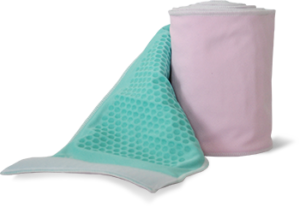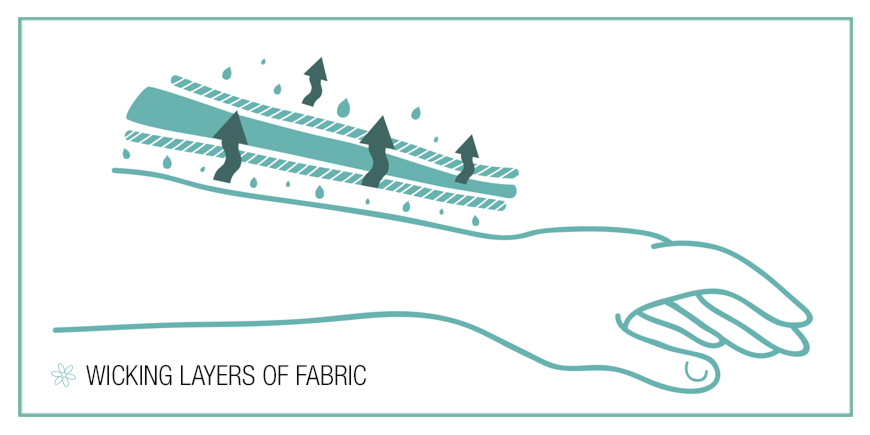Why KLS?
Reasons to use antimicrobial medical dressings:
- To control fluid - The dressing wicks the moisture to the middle layer and by doing so it prevents maceration due to excessive drainage against the skin.
- Advanced absorption capacity - The fluid or exudate is wicked into the middle layer. This layer is the absorptive layer.
- Prevent fluid retention - The compression effect will control swelling at the site of injury.
- Rapid absorption of fluid or perspiration
- Maintain moisture balance by insuring that there is a balance between and retention and absorptive properties.
- Reduce the complication of infection by moving the drainage away from the body and into the fabric which has antibacterial protection.
- Balance the inflammatory response via compression as well as keeping the fluid away from the wound so that healing can occur.
- Reduce pain due to the compression effect. Pain is also reduced because the dressing provides immobility.
- Minimization of "dead space", in which the fluid collects beneath the skin surface resulting in an increase in bacteria around the wound. Therefore an infection results as the fluid is stagnant inside the body.
Fabric
Enjoy antimicrobial protection with our latex free bandage wraps. Advanced technology fabric for soft, cool and comfortable compression. Dressing is reversible to reveal another color.
 The fabrics and multi-layer construction provide a wicking action to pull moisture away from the skin. The fluid droplets move from the skin's surface through the inner wicking layer. They pass through to the middle absorptive layer. Finally, the droplets pass from the middle layer to the outer wicking layer and evaporate in air. The antimicrobial threads help control micro organism growth. The silicon dots provide a non-slip surface.
The fabrics and multi-layer construction provide a wicking action to pull moisture away from the skin. The fluid droplets move from the skin's surface through the inner wicking layer. They pass through to the middle absorptive layer. Finally, the droplets pass from the middle layer to the outer wicking layer and evaporate in air. The antimicrobial threads help control micro organism growth. The silicon dots provide a non-slip surface.
Medical Wraps from KLS are Made in the U.S.A.
This dressing was invented by a registered nurse that became the patient. She understood the need for comfort, but why let style suffer. A positive attitude goes a long way.
Protects Wounds & Provides Support
The compression dressings protect an underlying wound, provide pressure, warmth, support and immobilization. The dressing need not be sterile when there is a sterile pad against the skin to protect the wound. Avoid wrinkles in the dressing as it is being applied or worn as it places pressure on the wound or the soft tissue. Do not apply too tightly as this could interfere with circulation causing swelling, numbness, tingling or color changes. Remove the dressing immediately if any of these symptoms occur; then reapply looser than it was previously. Dressings are always applied to the body part from the farthest point to the heart wrapping until you are at the closest point to the heart. An example of this would be if a dressing was needed on someone’s forearm. You would begin to wrap the dressing at the wrist and gradually wrap towards the upper arm. By wrapping this direction, one promotes venous return allowing one’s blood to return to the heart without pooling in any body part.
Signs and symptoms of the dressing being too tight.
- Change in color from normal to blue and eventually to white
- Cool to touch
- Numbness or tingling
- Extreme swelling below the dressing
- Loss of feeling or sensation
If any of these symptoms occur, remove the dressing immediately and reapply looser than before. You should be able to place one pinkie finger into the dressing to insure that it’s not too tight. If the dressing is too loose it will not achieve the desired outcome.
